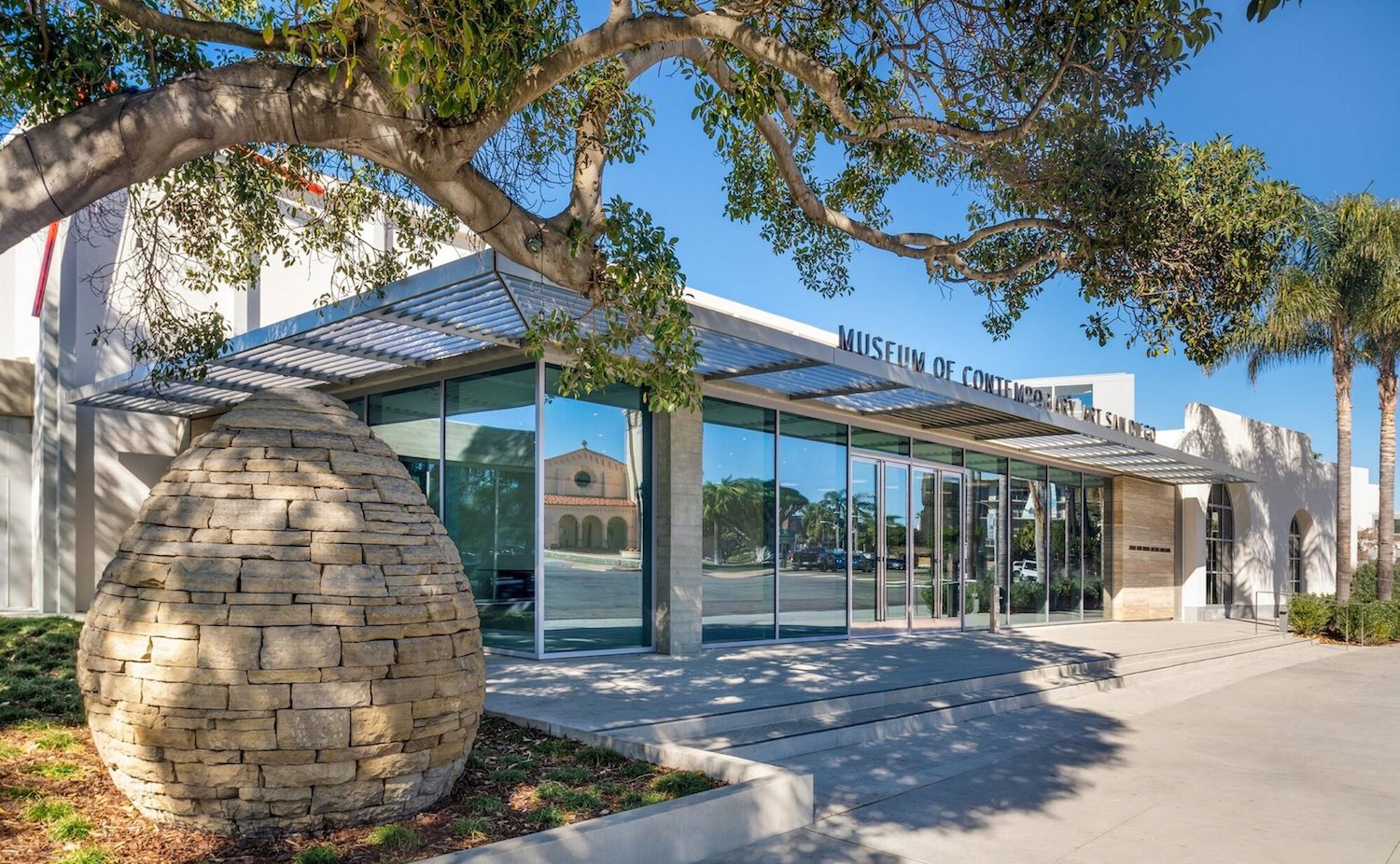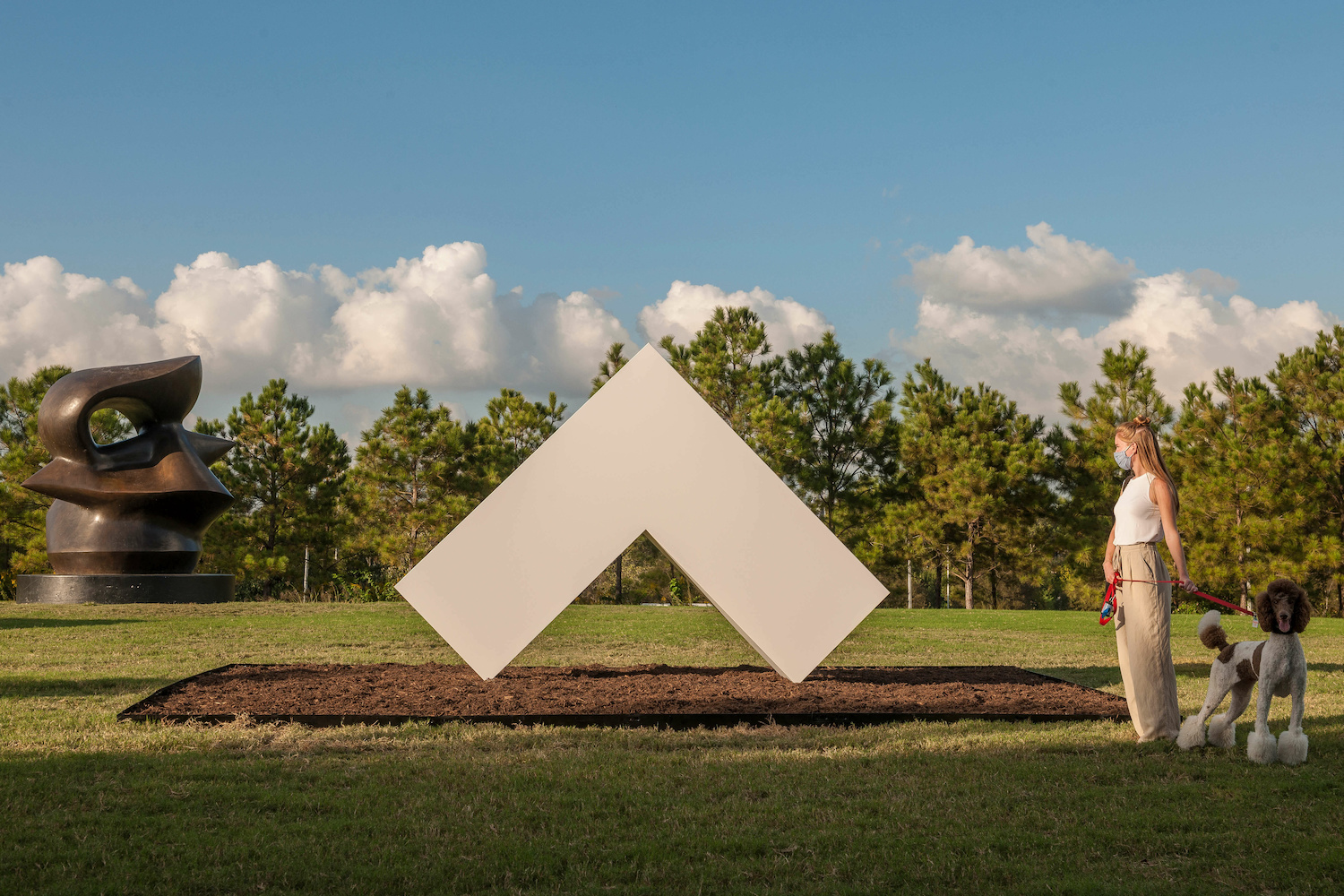New York, New York!
The art market is back, and here in SoCal we’re seeing it with a slew of New York galleries moving in. Pace’s “mergence” with Kayne Griffin is official, and I hear the new signage now bears the Pace name. Sean Kelly gallery is occupying a 10,000-square-foot space on N. Highland—to open anytime now. Looking ahead, another New York mega, David Zwirner, is planning on a three-building complex at 606 N. Western, slated to open next January. Two pre-existing buildings will be renovated, with a completely new one built from ground up. They have already announced the opening exhibition—a solo by LA-based Njideka Akunyili Crosby, whom they started repping in 2018. All this will be a real game changer for LA, and maybe now collectors won’t feel the need to seasonally jet off to New York to get their art shopping in.
One gallery is actually jumping across the pond and the continent to get to us—the influential New York and
London-based gallery, Lisson, is set to open in the fall in the Sycamore District of Los Angeles in a two-story building with over 8000 sq. ft., including outdoor patio, near a number of other existing galleries. Their opening show is Carmen Herrera’s “Days of the Week.”
Meanwhile our own homegrown David Kordansky Gallery is expanding east, with a New York space opening May 6, featuring an exhibition of new work by LA-based artist Lauren Halsey. “Opening David Kordansky Gallery in New York has always been part of the dream, for both me and our artists,” said Kordansky in his announcement. “I’m excited to provide a new platform for our growing program and to merge our sensibilities with the rich history and cultural trajectories of New York.” The new gallery will be located on W. 20th Street in Chelsea.

Post-renovation façade of MCASD, photo by Maha Bazzari
La Jolla Museum Redux
Over the years I’ve enjoyed visiting the Museum of Contemporary Art San Diego (MCASD) in La Jolla, but always felt there was a problem with the choppy flow. The building was born as a private home in 1916, became an art center in 1941, and went through various remodels over the decades. This time they hired world-class architect Annabelle Selldorf, currently overseeing the expansion and renovation of The Frick Collection in New York, and acquired an adjoining building to quadruple exhibition space. The result, unveiled in early April, is glorious, a contemporary art museum that feels comfortable to stroll through, designed in a way you can see everything without getting lost.
The latter is partly accomplished by a number of windows opening to the local landscapes. From the lobby you can see Prospect Street and other parts of town, from side windows you can see old bungalows, and in the rear there are many views of the seaside walk and the churning Pacific. “We decided to embrace our spectacular location on the edge of the Pacific Ocean,” said museum Director Kathryn Kanjo during the preview. “We were thrilled to take it all in,” said Selldorf. “We don’t think the windows are a distraction. It’s good to look out and be oriented.” Petite and soft-spoken, Selldorf is constantly thanking her collaborators, a refreshing departure from the egoism of many starchitects.
The elegantly spare design helps you appreciate the art, and for the first time I see what a really superb collection MCASD has. That includes the multicolor polka-dotted Kusama Yayoi pumpkin in the entrance, John Baldessari’s deadpan painting Terms Most Useful In Describing Creative Works Of Art, and Charles Gaines’ Airplanecrash Clock.
The special exhibition is “Niki de Saint Phalle in the 1960s” (through July 17), and it was a revelation. I knew of her early “shooting paintings” and of her colorful “Nana” sculptures—one of which is dancing in the center of a lower gallery. However, I was unaware of her assemblage and multi-media paintings of this period which often showed grim skyscrapers, sometimes being attacked by fighter jets and Godzilla-like creatures, and often on fire. Also included are several results of the “shooting paintings.” This is a show you may never see again, since much has been borrowed from European collections and some works are very fragile. Major kudos to the curators—Michelle White, senior curator at The Menil Collection, and Jill Dawson, curator of MCASD.

Jack Pierson, The End of the World, Twentynine Palms, High Desert Test Sites.
Desert News
You know how I love an excuse to drive through the desert, and High Desert Test Sites (HDTS) has finally returned. Celebrating its 20th anniversary this latest iteration, “The Searchers” (through May 22), features nine art installations dotting the high desert region around Joshua Tree and Coachella Valley. The curator is Iwona Blazwick, director of London’s Whitechapel Gallery, who brought six artists from the East Coast and abroad, to add to the three regional artists in the mix.
Here are a few highlights, and the fact that they have stuck in my mind a week later is testament to the smart thinking that has gone into curating HDTS 2022. A work that injects some black humor into its commentary is Jack Pierson’s The End of the World, gigantic all-cap letters that loom large in the desert behind The Palms Restaurant in Twentynine Palms. They’re constructed of chipboard and painted silver, and make a great Insta grab. I have always thought that deliberately divey bar had an end-of-the-world feeling, a great place to grab a few drinks and have a few laughs before The Bomb goes off.
The two videos are really really good ones, by the way, and worth driving down some uneven dusty roads. In Harese, Erkan Özgen worked with Marine vets from the Corps’ nearby training base for a film short in which they slap their bodies, ready rifles, and flick bullet shells to a hypnotic beat. In Other Dessert Landscapes, Dana Sherwood worked with Joey’s Home Animal Rescue in Yucca Valley to provide horses for her dreamlike video, in which they nibble on lavish desserts set on outdoor tables, with a shot of humans thrown in now and then. It was captured with an infrared camera and it’s surreal—I’m still thinking about it.
Stop by Kate Lee Short’s Respite, a small building partly sunken into the ground. If you go on a day when the wind is blowing, you’ll hear a little concert, because there are pipes built into the roofline. This, like Rachel Whiteread’s cement-cast Shack I and Shack II, are pre-existing structures, but generally aren’t open to the public outside of HDTS. Other artists in the event are Dineo Seshee Bopape, Alice Channer, Gerald Clarke Jr and Paloma Varga Weisz.


